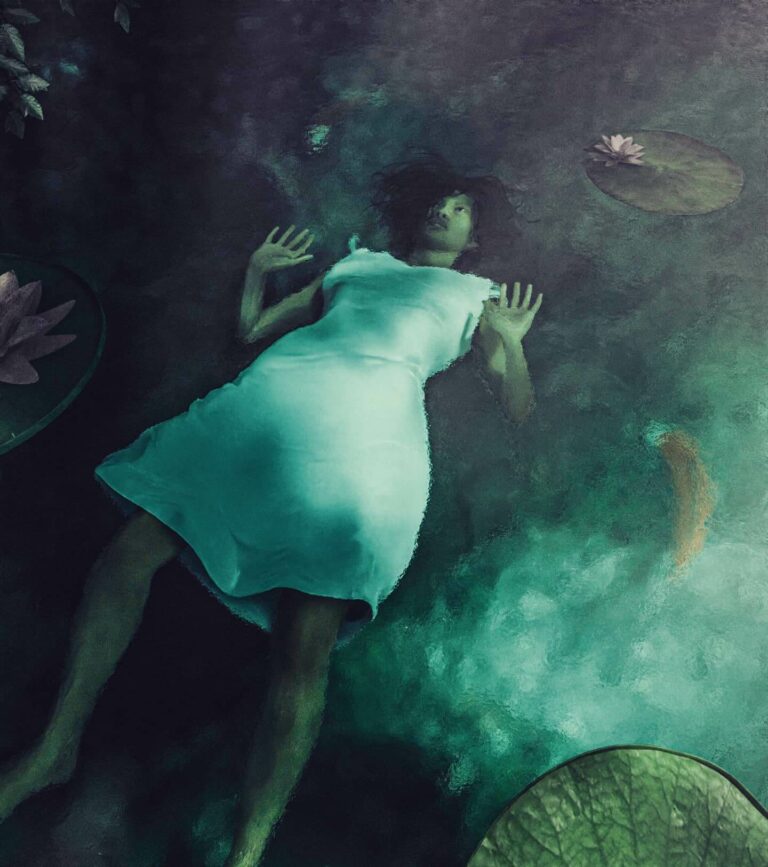Ophelia
In Shakespeare’s original work, Ophelia drowns in a state of despair, overwhelmed by the madness of her lost love and the pressures of the world around her. Here, the fall into the water takes on a more complex meaning. It is not merely an act of desperation, but a symbolic transition, a passage between two states of being. Ophelia falls into the water, but this fall is also an act of liberation. She allows herself to be engulfed, not by fate, but by the need to break free from the grip of social expectations, imposed norms, and her own inner turmoil.
This immersion in water represents a kind of catharsis, a necessary act of surrender to be reborn or redefined. She falls into the water not only because of the suffering she endures, but also because she is, consciously or not, seeking a way to escape, to free herself from the rigidity of convention. The water thus becomes a space of purification and renewal, where all that is old and painful can be washed away, making room for a new identity, a new understanding of herself and her existence.
Water, the central element in this composition, plays a key role in the process of transition. It represents both a place of surrender and a space of transformation. The aquatic element becomes a kind of purgatory, an in-between space where Ophelia floats in suspension, removed from constraints and expectations. The water lilies, symbols of purity, and the fish, signs of motion and transformation, add a spiritual dimension to the scene. While the fish suggest the idea of perpetual movement, the water itself becomes a place of calm and inner reflection.
She allows herself to be submerged, not to be lost, but to find herself in a space where the rules of reality no longer apply. The passage into water becomes a symbol of the fluidity of human existence, of the ability to reinvent and transform oneself.
« Ophelia » is a work that encourages the viewer to reflect on the process of personal transition. The question is not simply why Ophelia falls into the water, but what that act represents for all of us. Her fall, far from being a mere act of despair, becomes a way to shed the burdens imposed by society and others. It invites us to consider our own moments of crisis and loss as necessary steps in the journey toward reinvention and self-discovery.
Ophelia’s posture, floating in the water, suspended between life and death, becomes a metaphor for our relationship to uncertainty and pain. The work confronts us with the idea that sometimes we must fall, we must lose ourselves in order to find a deeper meaning in our existence. It is not a tragic end, but a process of transformation and purification. Ophelia is not simply a victim of circumstance; she is a heroine who, through her immersion in water, seeks a form of reconciliation with herself, with her thoughts and emotions.
« Ophelia » invites us to rethink the traditional myth, not as an act of resignation, but as a deep exploration of identity, passage, and renewal. Her fall into the water is not the end, but the beginning of an internal process of cleansing and rebirth. This work, rich in symbolism, questions how we approach moments of crisis in our lives. It reminds us that suffering, though intense, can become a catalyst for change and transformation.
Water, both calm and turbulent, embodies the fluidity of existence, where everything is in constant evolution, where every immersion into the unknown is a chance to rediscover our own truth.
